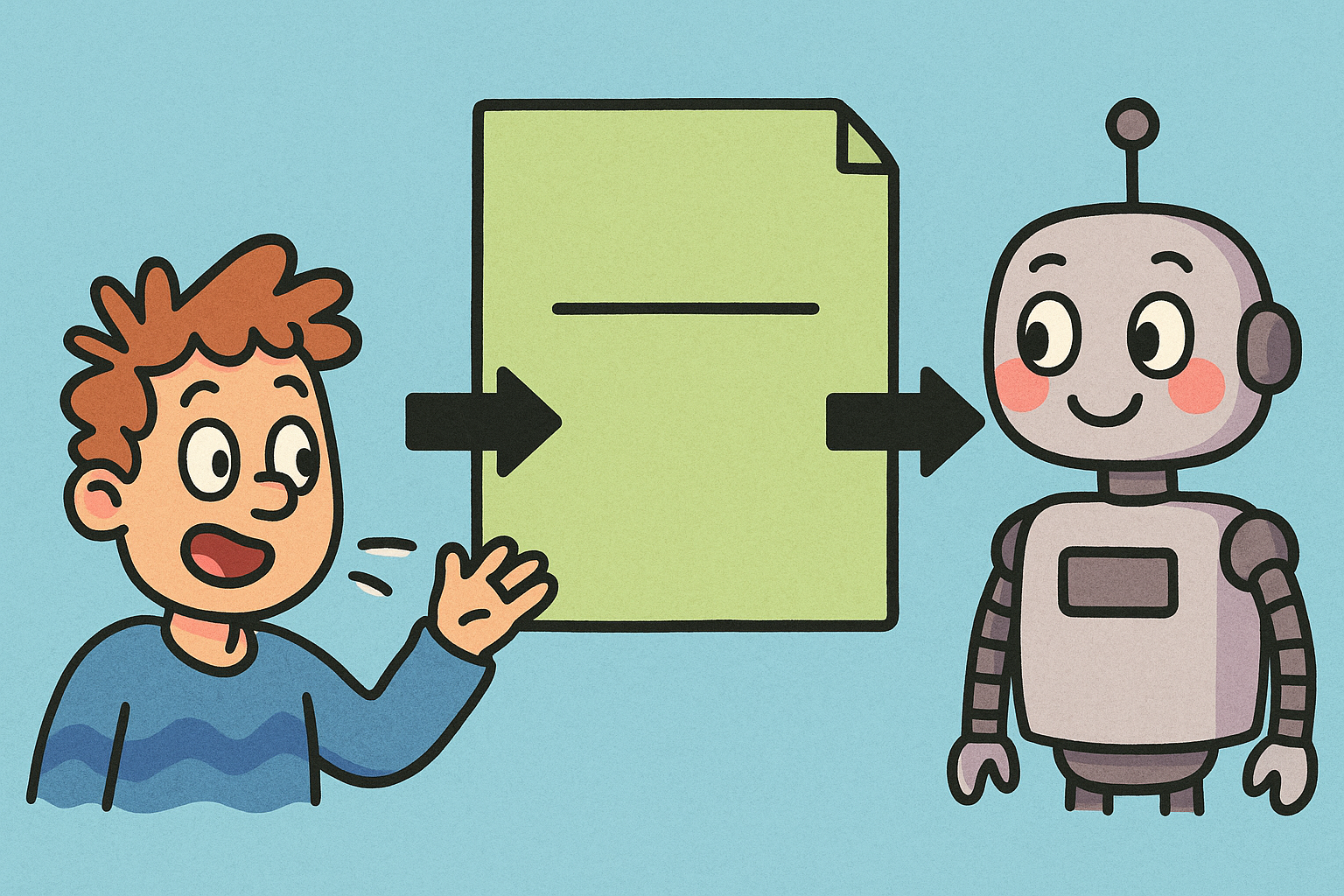Remember when sharing a photo between an iPhone and an Android felt like launching a satellite? You’d try AirDrop, Bluetooth, email, maybe smoke signals — and hope something stuck. That’s basically what the AI world has been like: powerful tools, each living in their own walled gardens, unable to talk to the apps and data we actually use every day.
Enter Anthropic’s Model Context Protocol (MCP) — a quiet revolution that might just make AI useful everywhere, not just in a browser tab.
So, What Is MCP, Really?
Think of MCP as a universal translator — but for your AI assistant and the digital universe you live in. It’s the middleman that helps AI tools like Claude (Anthropic’s large language model) seamlessly connect to the apps, files, and services you already use — without a circus of copy-pasting, API juggling, or Frankenstein-style integrations.
Before MCP, if you wanted Claude to analyze your Google Sheets, you’d have to either:
Export the sheet,
Copy rows into the chat manually, or
Build a custom integration (assuming you moonlight as a developer).
With MCP? Claude just asks for what it needs — and the protocol handles the rest. It’s like giving your AI assistant keys to the office, rather than shouting requests through a closed door.
How Does MCP Actually Work?
At a technical level, MCP uses a network of trusted servers (called context servers) that act as translators between your AI and the outside world. These servers securely fetch data — from your Notion workspace, Salesforce CRM, Google Drive, Slack messages, or wherever — and hand it to the AI in a way it can understand, use, and respond to.
Imagine telling your AI:
“Look at this contract in Google Docs, pull sales numbers from Q2 in Salesforce, and tell me if this pricing aligns with our recent deals.”
Normally, this request would break even seasoned tech teams. With MCP, it’s just a conversation.
Why Should Businesses Care?
1. Say Goodbye to Copy-Paste Madness
Let’s be real: AI is powerful, but most people are using it like a glorified calculator. You copy something from your CRM, paste it into ChatGPT or Claude, get an answer, then go paste it back somewhere else. Multiply that by hundreds of questions a week, and you’re losing hours to busywork.
MCP cuts out the middle steps. Your AI can read directly from the source, answer in context, and even take action in your apps — no bouncing between tabs.
2. Turn Your AI Into a Team Member, Not Just a Tool
Think of MCP as what turns your AI from a helpful chatbot into your smartest employee. With access to real-time tools and company data, it can:
Pull product inventory,
Check delivery timelines,
Write personalized responses to clients,
Generate insights across platforms.
Instead of asking you for every detail, it finds what it needs — like a competent team member should.
3. Scale Your Brainpower
Let’s say your pricing model is so complex only your senior analyst really gets it. Now imagine if your AI assistant could be trained on that logic, access the same financial systems, and offer consistent insights across sales, finance, and ops — 24/7.
With MCP, your institutional knowledge becomes scalable and repeatable. That’s how teams win.
What Can You Actually Do With MCP?
Customer Support That Doesn’t Require a Squad
Instead of a rep switching between Zendesk, Shopify, Stripe, and Gmail to help one customer, MCP lets your AI assistant pull:
Order history,
Recent support tickets,
Billing issues,
Shipping delays…
… and reply instantly, with context. It’s like giving every customer rep superpowers (minus the cape).
Financial Analysis That Doesn’t Give You a Headache
Want to know how your Q3 ad spend in Chicago compares to Q2 revenue in the Midwest? Normally that’s a weekend project.
But with MCP, your AI can combine accounting software, Google Sheets, and ad reports — and give you a detailed answer in plain English. It’s like hiring a financial analyst with zero onboarding.
Project Management With Less Chaos
Link your AI to Trello, Notion, Asana, Google Calendar — whatever your team uses. It can surface overdue tasks, spot scheduling conflicts, reassign based on workloads, or suggest timelines based on previous project data.
No more Slack threads asking “Where are we on this?”
Sales Insights You Can Actually Use
AI with MCP access to your CRM, industry reports, and sales data can answer:
“What’s the most common objection we get in Q4 deals with SMB clients in healthcare?”
Now imagine it goes one step further and says:
“Here’s a new email sequence to handle that objection — and I’ve queued it up for your review.”
That’s not a tool. That’s a strategist.
So… Is MCP Just Another Buzzword?
Nope. It’s the missing piece that makes AI useful across your entire business. Instead of locking AI inside one platform, MCP opens the doors — securely and intelligently — to the rest of your ecosystem.
In plain terms:
Before MCP: You had a genius intern trapped in a box.
After MCP: You have a cross-functional expert embedded in your business.
The companies that figure this out early will move faster, make smarter decisions, and leave their competitors buried in spreadsheet tabs.
Final Thoughts
MCP is not just another acronym to toss on your LinkedIn. It’s a real shift in how AI fits into our work. It turns static, siloed systems into dynamic, integrated intelligence.
The future of business won’t be about who has AI — it’ll be about who actually integrates it into their daily workflow.
And if you’re still playing copy-paste Olympics with your data while your competitor has Claude pulling live insights across five apps?
You’re already behind.

